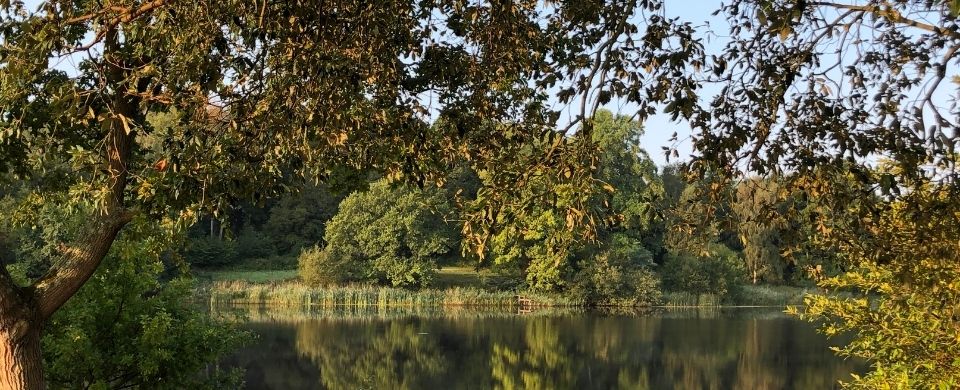A Rocha UK launches new Land Goal
by A Rocha UK’s Head of Conservation, Andy Lester.
A Rocha UK is at the beginning of a 5-year journey, working with others, to transform 75,000 acres across the UK for nature. This ambitious goal recognises that Christians own or manage up to 500,000 acres of land across the UK. Some of this is owned by churches, estates, retreat and conference centres. A very large amount is held by denominational bodies such as the Anglican Church Commissioners. Other areas are gardens and smaller areas of land held by individuals.
Why is this necessary? The answer is that UK wildlife continues to struggle. Many familiar species and habitats are still declining in quality and quantity despite the best efforts of the conservation movement. It is not just that intensive farming, house building, and forest loss have all had impacts but also the rise of climate change and its impact on food sources, migration, water access and hibernation patterns.
It is in response to this crisis that A Rocha UK has launched its big land goal. Influencing 75,000 acres will be a challenge, but one we think is perfectly possible and which will deliver massive benefits if we succeed. 75,000 acres is an area the size of the city of Birmingham and Portsmouth combined. Imagine what that could look like if it was restored for nature conservation?
Our approach will be to use all of our programmes to help deliver the goal. For example, our rapidly growing Partners in Action programme will seek to restore 25,000 acres through the network of Christian conference and retreat centres, and other Christian organisations with land. We will also seek through our Convening Programme to influence at least 500 Christian environmental leaders, many of whom will have a responsibility for the management of large areas of UK land. And Eco Churches can contribute their churchyards to the effort. Wild Christian participants can contribute their gardens too.
We will encourage landowners and land managers to think about continually improving the land they care for so that habitats recover, and species numbers and densities increase. Rolling out ‘Nature-based Solutions’ to climate change is a key part of our plan. We want to see an expanding mosaic of habitats that are good for nature and help wildlife adapt to climate change. But by doing this we can also create landscapes which help slow climate change, expanding the area of land – whether forest, wetland or grassland – which will ‘lock’ carbon into the soil, and regenerate the UK’s natural ‘carbon sinks’.
The recent Partners in Action programme retreat confirmed the members’ commitment to this goal and we look forward to expanding activities rapidly in the year ahead.
Image: Our Partner in Action, Ashburnham Place by Regina Ebner






It would be great to map the pledges being made by delivery partners and the opportunities identified as part of the75000 ha so that these can be joined up with other plans and activities as part of local nature recovery networks.
Great idea. Hope ot goes well. What’s the minimum land qualification?. I have a flat but overgrown back garden about 10ft by 20
I love this initiative. We have started to plant a number of separate wildflower areas around the church yard and graveyard that we manage as a church and hope the first of these will bring wonderful results next year. It’s exciting to read about this in your enews letters. For land managers such as ourselves it’s good to have the encouragement of an organisation like yours. We haven’t however signed up to become an eco church as our focus has been on improving the land use and more individual action to becoming eco friendly in a number of ways. As a small church I did look at the paperwork once for registering and was totally overwhelmed at the breadth and number of questions – many of which were out of any area of expertise or experience I thought we had or could muster. But I want to encourage you to say that I know your influence is far wider than your membership – and even ‘non members’ like ourselves are working to restore and regenerate the wildflower and wildlife areas of our communities and watching and monitoring your initiatives and support in this area. God Bless. Mark, Elder, Tadley URC
Andy,
Where may we find the specific guidance for gardens?
Mine has been badly affected by neighbour’s choices.
However, a rambling rose that has taken over an elderberry, and wild rose that turned up in a bed, must now be housing 70 or more sparrows, that had been displaced.
In Aldbourne (a village of 2,000 people) we have set up a virtual nature reserve where people nominate a part of their garden to be part of this nature reserve by agreeing not to use pesticides or herbicides, have a pond, hedgehog highway or bee house and encourage birds and bees by the plants selected. We are aiming for a total of 7,000 square metres. So far we have reached 48% with more to do. Here is a link to a blog about the reserve. https://www.carbonneutralaldbourne.co.uk/a-visit-to-the-aldbourne-nature-reserve/
Very good stuff – Go A Rocha!